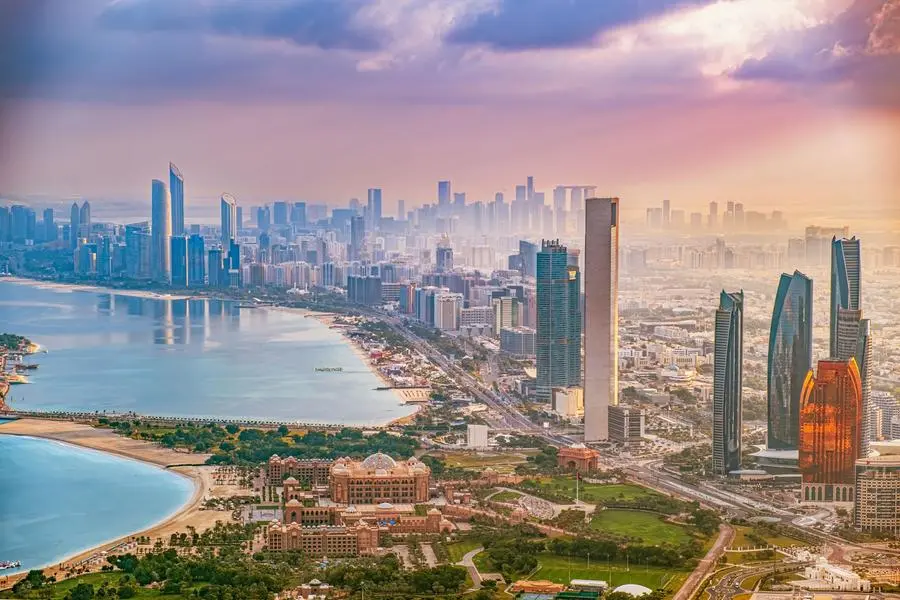Automotive hubs such as Dubai are expected to benefit from rising demand for vehicles from the African continent, according to analysts.
"The United Arab Emirates (UAE) is known to be a major re-exporter of spare parts throughout the Gulf and wider Middle East," said management consultant Frost & Sullivan.
"Now Sub-Saharan African countries such as Nigeria, Angola, Congo Republic, and North African countries such as Libya are gaining importance as markets for re-exported parts from the UAE. These countries are becoming larger markets that cover about 30-35% of total exports from the UAE and in three to four years, the market share for the African region will rise to 45-50%."
Africa is expected to see new two million car sales this year, and major players including General Motors, Toyota and Tata Motors are increasingly eyeing the continent as the final frontier market. There are now nearly 21.6 million passenger vehicles operating in the continent.
"On the back of double-digit growth of demand in key Sub-Saharan countries, the value of Africa's auto parts market is likely to double by 2020," Subhash Joshi, industry manager for Frost & Sullivan's Automotive and Transportation Practice, Middle East, North Africa and South Asia, wrote in a white paper. "Countries such as Nigeria, Kenya, Uganda [and] Ghana, have witnessed double-digit growth in demand of parts in the past five years."
Forecasts from The Organization of Petroleum Exporting Countries reveal that car ownership in Middle East and Africa will nearly triple to 66 million by 2035, compared to 23 million in 2010, making it among the fastest growing markets in the world over the next few decades. Commercial vehicles will also rise to 37 million from 10 million during the same period.
While analysts note that Africa's car market has been slow to accelerate, it is showing signs of picking up.
Around 1.2 million new cars were registered in Africa last year, relatively flat compared to the previous year's 1.1 million sales, according to the International Organization of Motor Vehicle Manufacturers.
South Africa, Egypt and Algeria are the biggest markets in the region by some distance.
GROWTH ACCELERATES
Africa's economy has rocketed ahead of most other regions over the past decade and millions of Africans have joined the middle class, with dreams and aspirations of ditching their bicycles and motorcycles for the comfort of family-friendly cars.
African governments are also investing billions in road infrastructure to connect cities and towns, which is opening up new paths to wealth and job creation. The Greater Ibadan Lagos Accra Corridor in West Africa hopes to connect 18 million people, while the 1,000-kilometer Abidjan-Ouagadougou corridor and a Trans-Cunene Corridor linking the Democratic Republic of Congo with far-flung South Africa, Angola and Namibia are just some examples of massive investments taking place to upgrade urban transportation networks.
Taken altogether, transportation projects worth an estimated USD 500 billion are planned or under way in the continent. And this all-round growth is fuelling demand for the automotive sector.
While South Africa has been an established automotive market in the continent, the sector needs more automotive centers to support the industry. South Africa produced 545,913 cars last year (a 1.2% increase over the previous year), but new auto-hubs are sprouting up in the continent.
Morocco's automotive production stood at 167,452 in 2013, a 54% jump over previous year, although Egyptian production fell 31% during the period due to political troubles, according to data from the International Organization of Motor Vehicle Manufacturers.
In Algeria, French car company Renault is constructing a car assembly plant to build New Symbol and Logan brands. The joint venture with the Algerian government will start manufacturing 25,000 units by 2015.
In Nigeria, domestic vehicle maker Innoson Vehicle Manufacturing has built on its success in making trucks and buses to launch a passenger car this year that opens a fresh chapter for the automobile sector in one of Africa's most promising markets.
Local parts production is limited to a few North African countries like Algeria, Egypt and Morocco which are self-sustained markets, said Frost & Sullivan.
"Limited impact of government legislation/regulation in most of the Sub-Saharan African countries is leading to increased grey imports, with Nigeria being the largest market. As per Frost & Sullivan analysis, 55-60% [of the] auto parts market is expected to be driven by grey imports."
COMPETITION GATHERS STEAM
While the aftermarket is definitely experiencing growth, competition between manufacturers and importers of new vehicles is also intensifying. Manufacturers are taking direct action to grow their presence across the regions in anticipation of market growth. For example, Honda is setting up its West African office in Nigeria. The UAE-based importers like Al-Futtaim Group are also expanding into the African market, Frost & Sullivan noted.
Still, transportation in Africa remains notoriously expensive. World Bank data shows transport costs per kilometer stood at USD 0.11 in West Africa, compared to USD 0.5 in China. Other impediments include lack of financing to purchase cars and prices of new cars that are often beyond the reach of the middle class.
"Between 2012 and 2020, Sub-Saharan Africa's commercial vehicles market is expected [to grow] by 62.5%," noted Frost & Sullivan. "Furthermore, it is expected to achieve a CAGR of 6.3% during this period."
The feature was produced by alifarabia.com exclusively for zawya.com.
© Zawya 2014



















